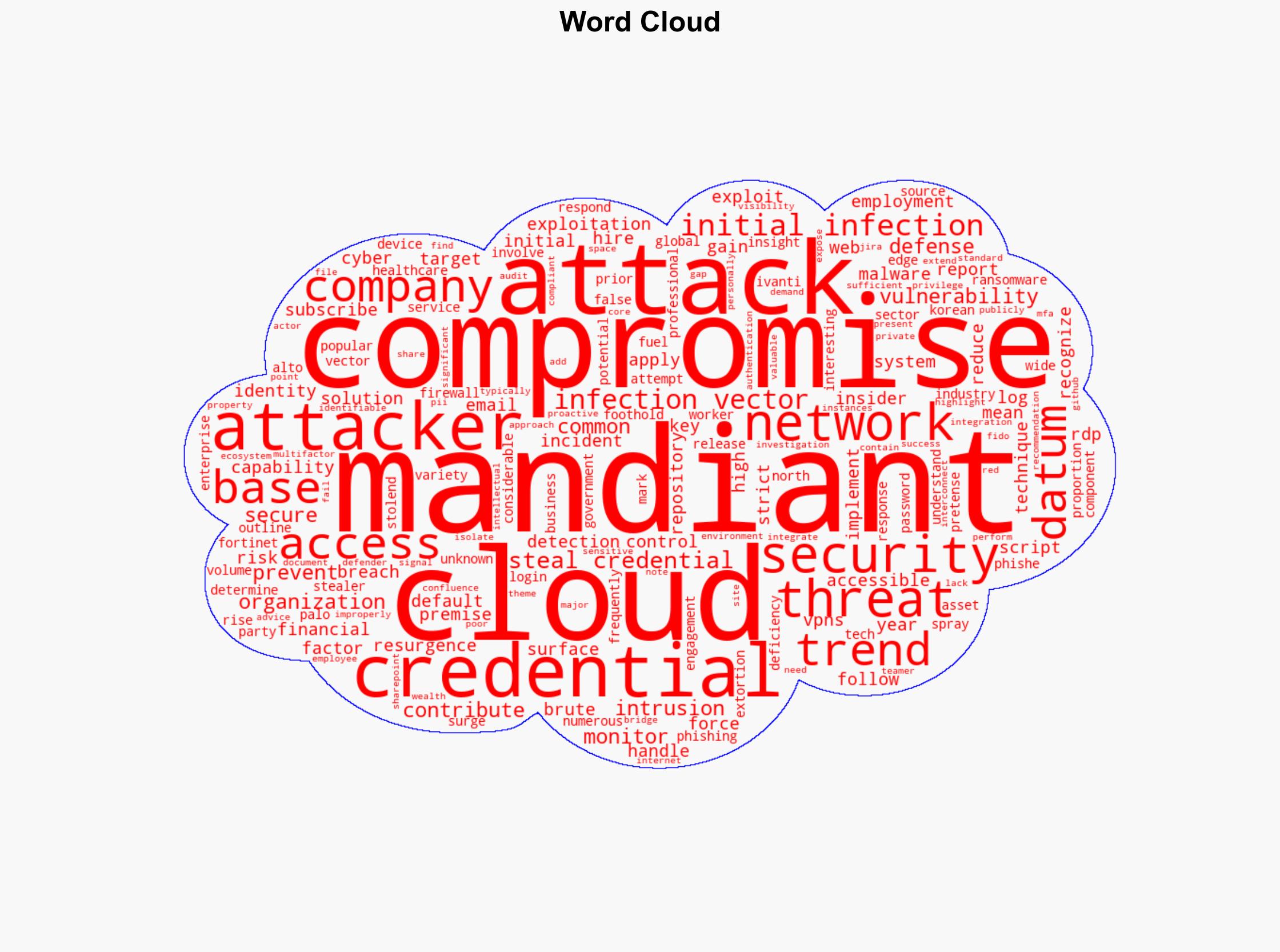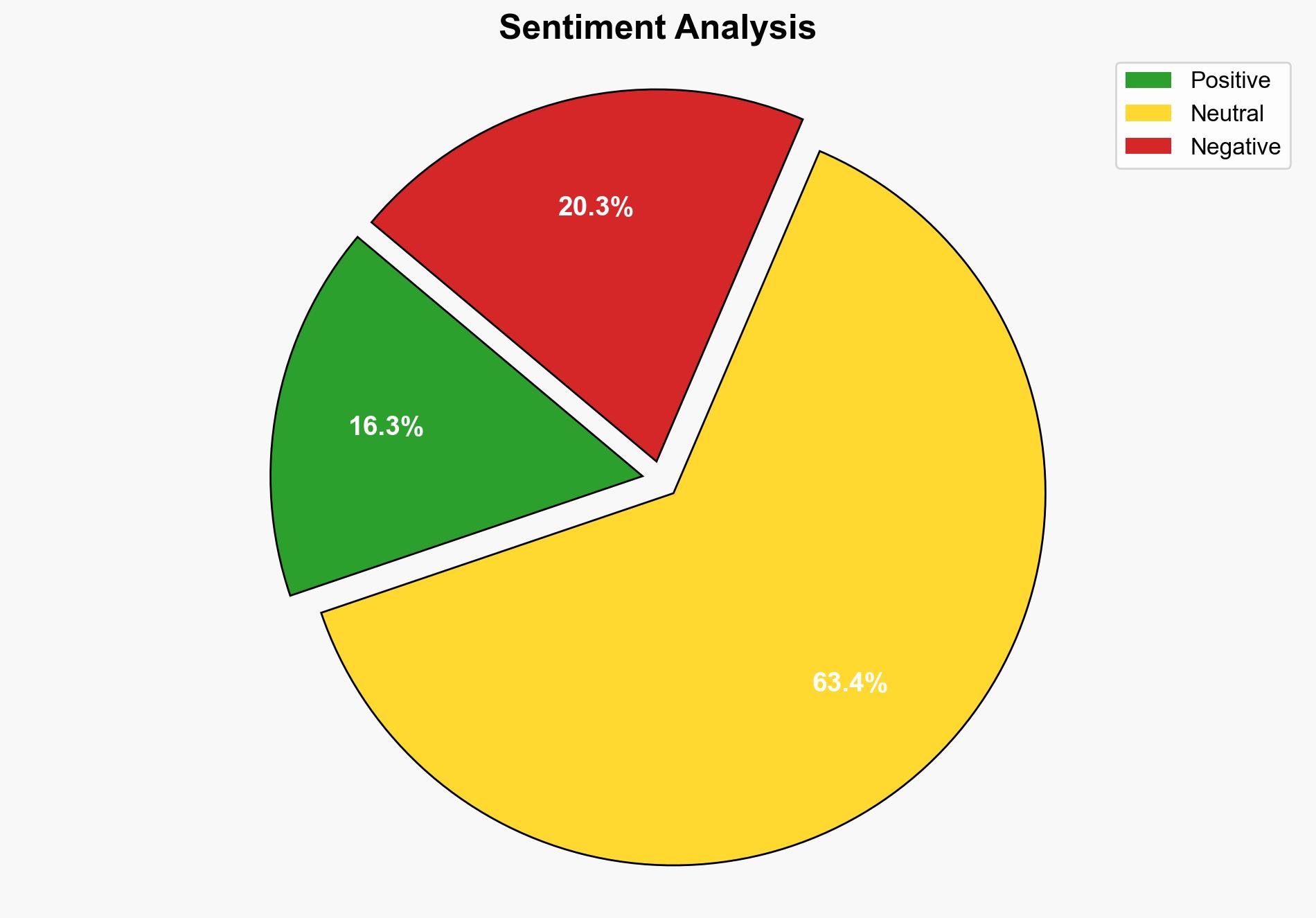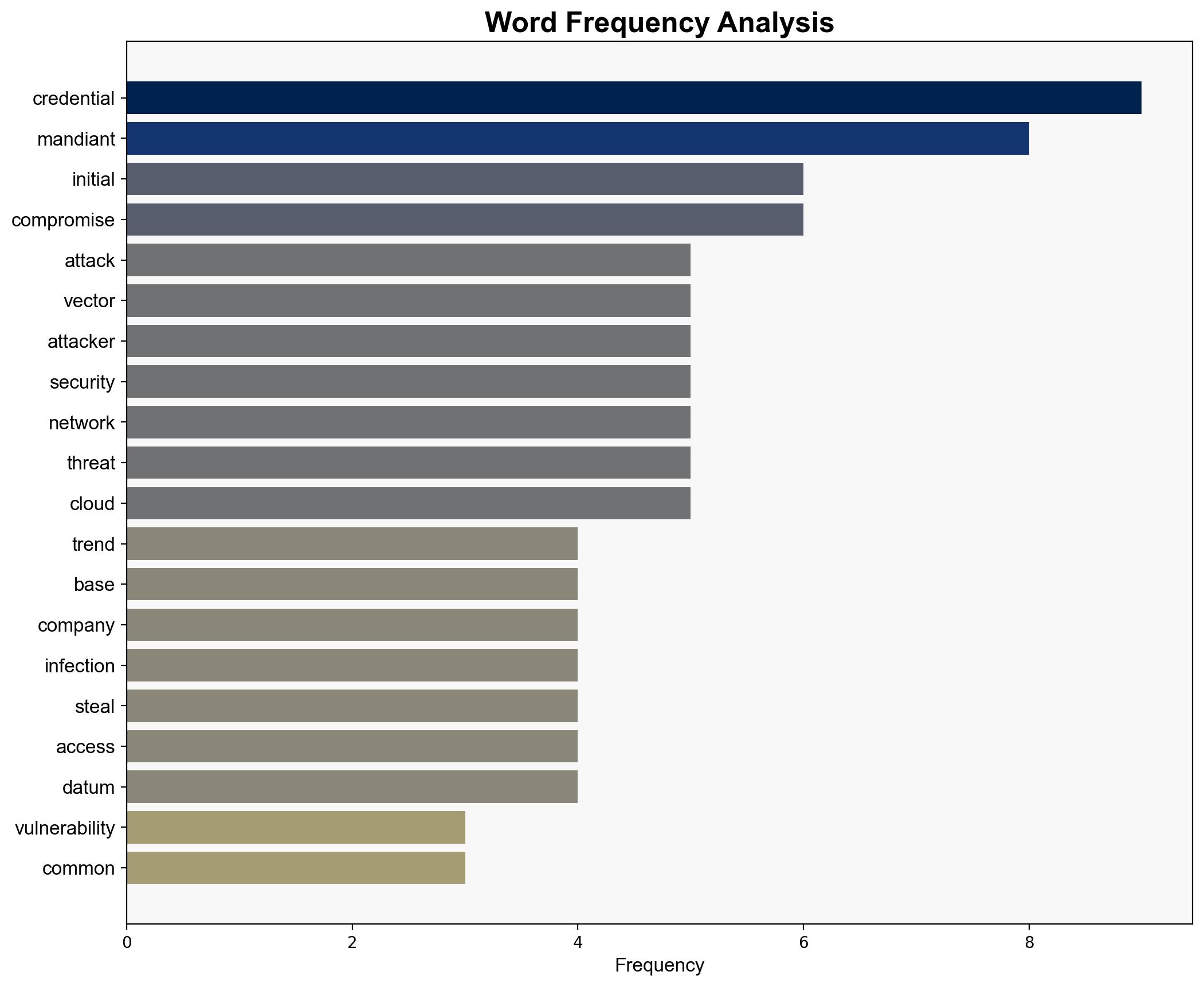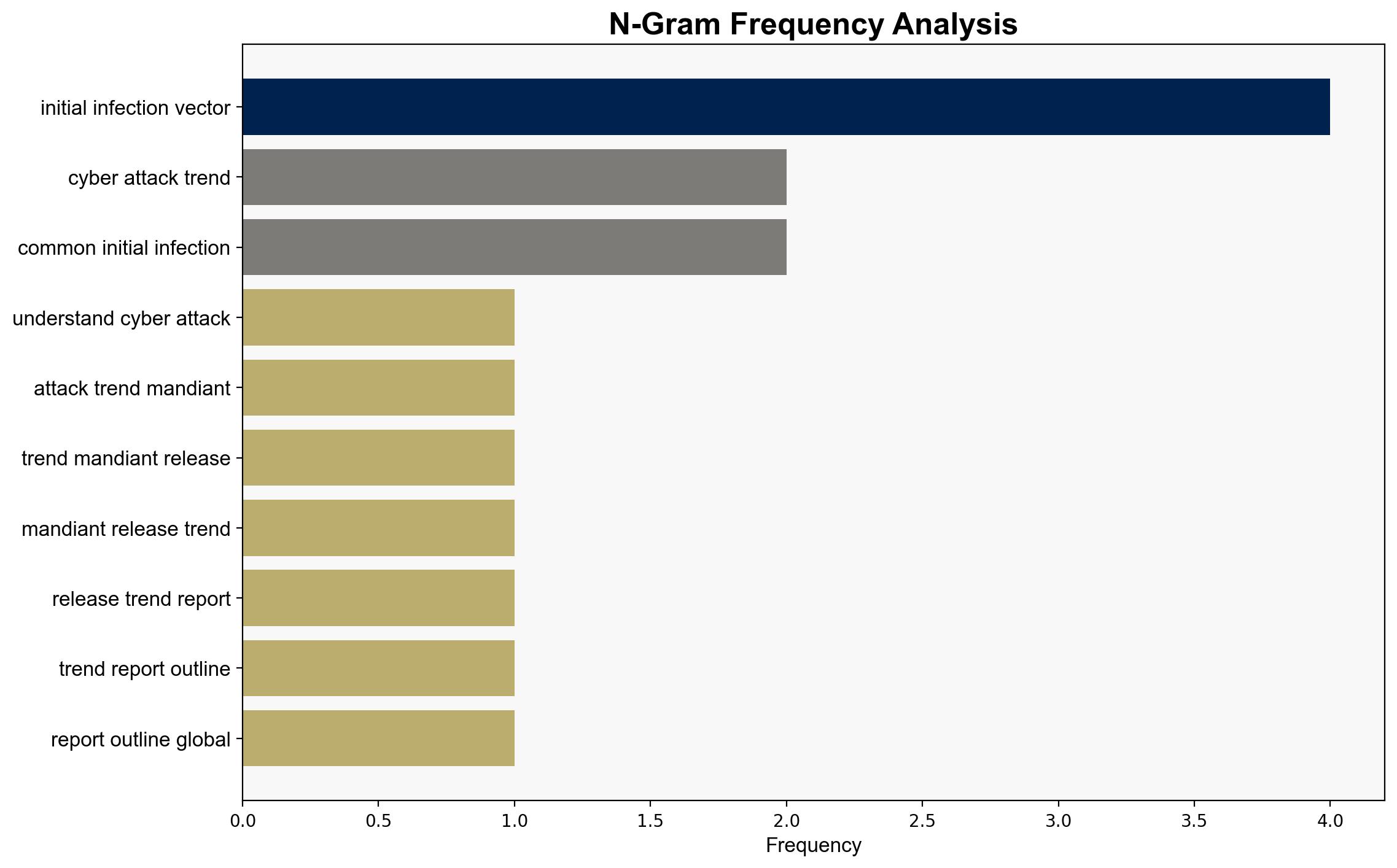Understanding 2024 cyber attack trends – Help Net Security
Published on: 2025-04-24
Intelligence Report: Understanding 2024 Cyber Attack Trends – Help Net Security
1. BLUF (Bottom Line Up Front)
The 2024 cyber attack landscape is characterized by a resurgence in credential-stealing malware, increased exploitation of vulnerabilities in edge security devices, and a rise in insider threats. Key sectors such as financial services, high-tech, and healthcare remain primary targets. Organizations must enhance their security posture by implementing multifactor authentication, securing exposed infrastructure, and improving cloud security integration.
2. Detailed Analysis
The following structured analytic techniques have been applied to ensure methodological consistency:
Analysis of Competing Hypotheses (ACH)
Evidence suggests that the primary vectors for cyber incidents include phishing, exploitation of vulnerabilities, and insider threats. The least refuted hypothesis is that inadequate security controls and poor visibility into cloud environments significantly contribute to these breaches.
SWOT Analysis
Strengths include the availability of advanced security technologies and expertise in incident response. Weaknesses involve insufficient integration of identity solutions and cloud security. Opportunities lie in adopting proactive defense strategies, while threats include evolving malware and sophisticated insider tactics.
Indicators Development
Key indicators of emerging threats include increased phishing campaigns, anomalous network access patterns, and unauthorized data access attempts. Monitoring these signs can help preempt potential breaches.
3. Implications and Strategic Risks
The persistence of vulnerabilities in edge devices and the growing sophistication of insider threats pose significant risks to national security and economic stability. The interconnected nature of cloud environments increases the potential for widespread impact from a single breach, necessitating a comprehensive security strategy.
4. Recommendations and Outlook
- Implement FIDO-compliant multifactor authentication to prevent credential theft.
- Conduct regular audits of internet-exposed infrastructure to mitigate brute force and credential stuffing attacks.
- Enhance cloud security by integrating robust identity solutions and improving visibility across hybrid environments.
- Scenario-based projections: Best case – Improved defenses reduce successful breaches; Worst case – Continued vulnerabilities lead to significant data breaches; Most likely – Incremental improvements in security posture with ongoing challenges.
5. Key Individuals and Entities
The report does not specify individuals by name. Focus remains on organizational and sectoral impacts.
6. Thematic Tags
(‘national security threats, cybersecurity, counter-terrorism, regional focus’, ‘cybersecurity’, ‘counter-terrorism’, ‘regional focus’)




